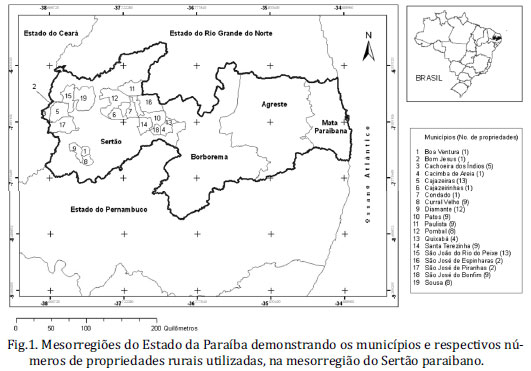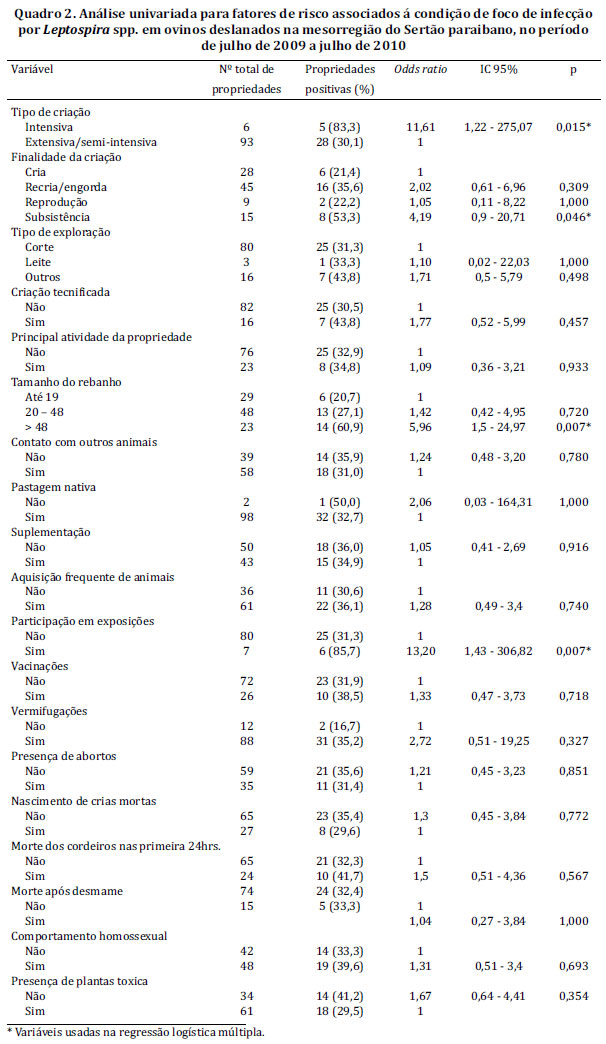The aim of this investigation was to determine the herd-level and animal-level prevalence of leptospirosis in sheep from the semiarid of Paraíba State, Northeast Brazil, as well as to identify risk factors. Blood samples were collected from 1,275 sheep from 117 flocks in 19 counties in the Sertão mesoregion, Paraíba. For the serological diagnosis of leptospirosis the microscopic agglutination test (MAT) using 24 Leptospira spp. serovars as antigens was carried out. Of the 117 flocks studied 33 (28.20%) presented at least one seropositive sheep, and of the 1,275 animals 69 (5.41%) were seropositive with titers ranging from 100 to 3,200. Reactant serovars were Autumnalis (49.30%), Andamana (27.53%), Sentot (17.39%), Whitcomb (4.34%) and Australis (1.44%). Herd size > 48 sheep (odds ratio =2.26; 95% CI =1.33-5.07; p=0.021) and participation in animal exhibits (odds ratio =9.05; 95% CI =0.96-85.71; p=0.055) were identified as risk factors. The need was suggested for studies on the isolation of the agent, characterization of its pathogenicity and its economic impact on sheep flocks of the region, and sanitary control in sheep agglomerations was recommended.
Leptospira spp.; leptospirosis; sheep; epidemiology; sertão of the Paraíba





